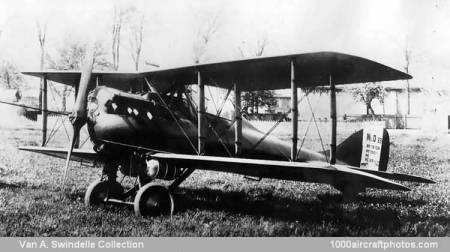11/30/2010. Flown for the first time early in June 1918, the Nieuport 29 combined several features previously tested by Gustave Delage on earlier prototype fighters. A nominally staggered two-bay equi-span biplane powered by a 300 hp Hispano-Suiza 8Fb eight-cylinder liquid-cooled engine and carrying an armament of two 0.303 in (7.7 mm) Vickers guns, the Nieuport 29 featured a wooden monocoque fuselage (thin tulip wood strips glued in spirals in alternating directions) and fabric covered wings.
An initial series order on behalf of the Aviation Militaire was placed in 1920, the first being delivered on February 11, 1921. A variant referred to as the "Nie 29 Type 22 m2" with wing area reduced by 53.82 sq ft (5,00 m2) was displayed at the Salon de l'Aéronautique in December 1922, but did not attract a production contract. Another variant, with a Gnome 9N rotary engine, was identified as the Nieuport 29G.
With the death of Louis Nieuport, the Etablissements Nieuport amalgamated with the Astra concern in 1921 to become Nieuport-Astra, and subsequent to the commencement of production deliveries of the Nieuport 29, Nieuport aircraft were restyled Nieuport-Delage, the new fighter thus becoming the
NiD-29. The Aviation Militaire strength peaked at 25 escadrilles equipped with this type in 1925. In excess of 250 were built by Nieuport-Astra, Schreck, Levasseur, Potez, Bleriot, Letord, Farman and Buscaylet, the excellent maneuverability and sturdiness of the NiD-29
attracting considerable foreign attention.
Several were exported to Argentina, 21 were supplied to Belgium (where 87 more were built by SABCA), six were delivered as pattern aircraft to Italy (where 80 were built by Caproni and 95 by Macchi) and one as a pattern aircraft to Japan. In this last-mentioned country, no fewer than 608 were built by Nakajima with the designation Ko-4 for the Imperial Army between 1923 and 1932, these remaining in service until 1933, and seeing extensive use during the Manchurian and Shanghai conflicts. Twenty were sold to Spain (where 10 more were license-built) and nine went to Sweden. View also photo 10934.
